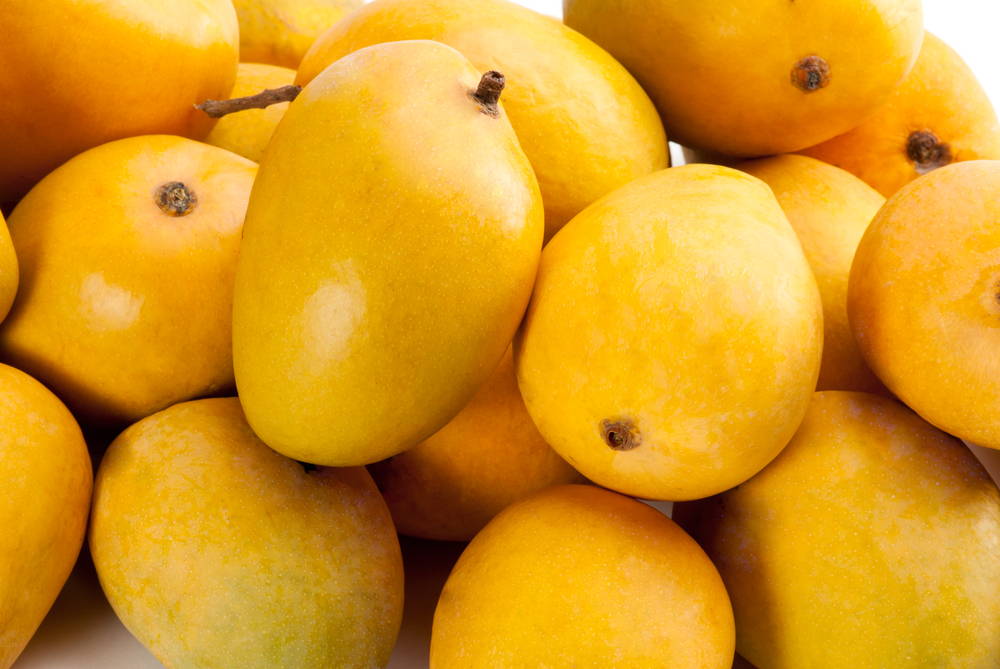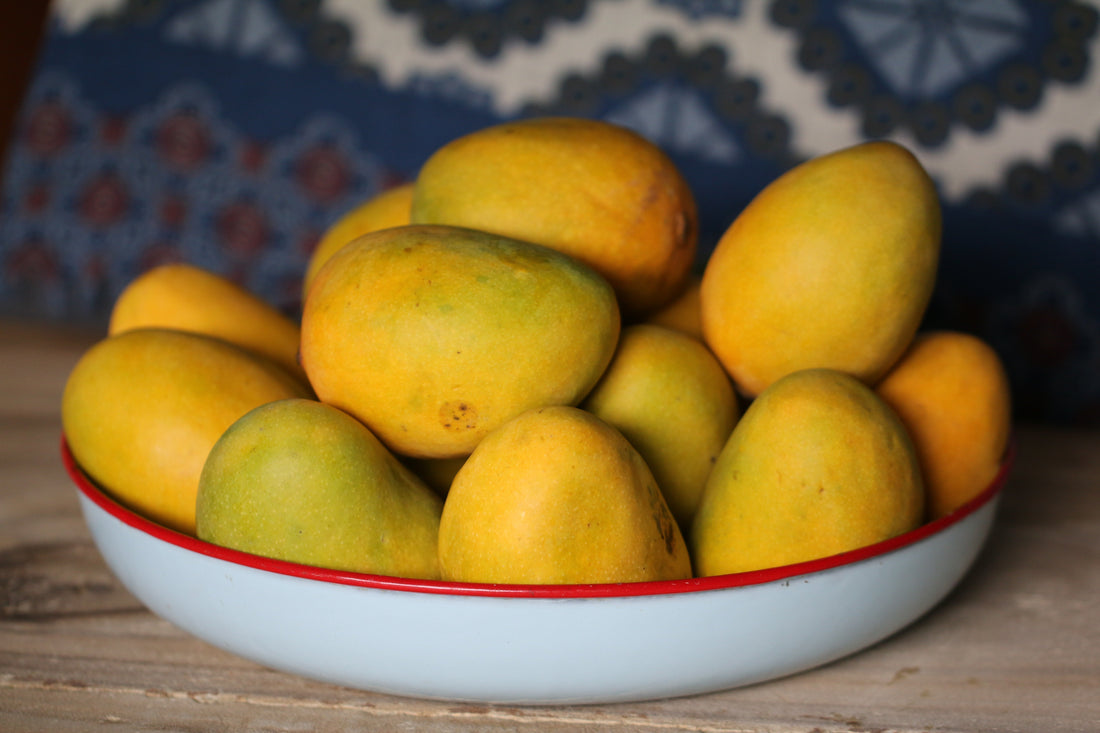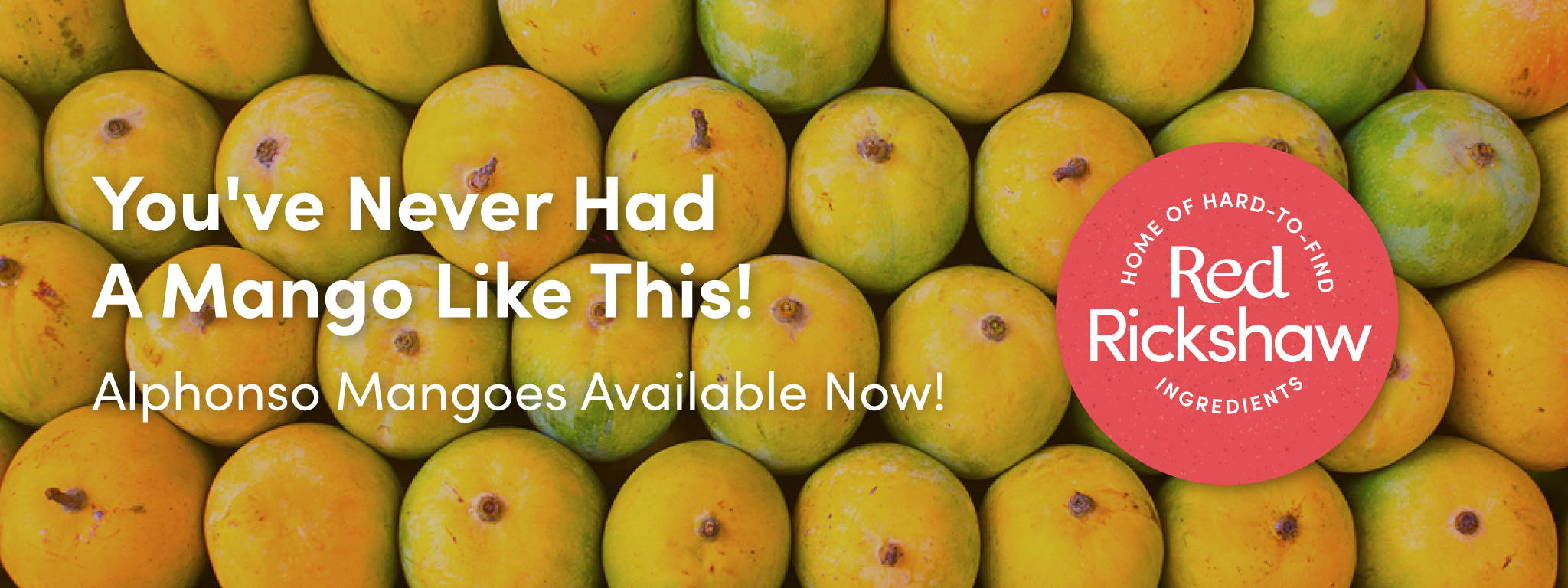What Are Alphonso Mangoes, And What Makes Them So Good?
WHAT IS AN ALPHONSO MANGO?
Smooth and creamy with a soft skin of deep marigold, Alphonso mangoes are considered to be the pinnacle of mangoes, with a superior taste, flavour, texture and sensation to all others. Bursting with mouth-wateringly fresh juice and flavour, Alphonso mangoes are widely heralded around the world, and especially in India, for their smooth consistency and vibrant taste.
The Alphonso mango differs from the red-green mango you will find in a supermarket - a Tommy Atkins mango - due to its colouring, texture and sweetness. Alphonso mangoes have a yellow skin and have a rich and and succulent taste while Tommy Atkins mangoes have a much milder flavour. In terms of texture, Alphonso mangoes are incredibly soft and supple while Tommy Atkins are much more fibrous and tough. Alphonso mangoes are devoid of stringy fibrous texture, and when perfectly ripe glide away from the skin.
Named after Afonso de Albuquerque, the Portuguese conqueror of Goa, Alphonso mangoes origins are born out of a happy accident. Arriving with his fleet from Brazil at the port of Goa, India, Afonso de Albuquerque's fleet were carrying with the common Brazilian mangoes. These seeds were planted in India and bore fruit - and due to the different acidity and minerals available in the soil combined with the salty sea air from the Arabian Ocean, created a hybrid mango variety - the Alphonso.

WHERE ARE ALPHONSO MANGOES GROWN?
Alphonso mangoes are grown predominantly in India, which is the epicentre of mango cultivation. Scientists predict that over 1000 mango varieties exist in India. Mangoes are incredibly sensitive to the soil and climatic conditions they are grown in - having a huge impact on how they grow and their quality.
WHEN IS MANGO SEASON?
Mango season moves with the weather in India - which is as difficult to predict as the weather in the UK! Mangos need hot and dry weather to ripen and badly suffer when it’s cold. Indian mango season usually starts in March and lasts until July-August. Alphonso mangoes are always the first Indian mangoes of the season, swiftly followed by Kesar and Badami as the rainy season moves up through the continent from Kerala towards New Delhi and Calcutta.
How healthy are alphonso mangOES?
Mango is an exceptionally good source of vitamin C which is essential for boosting your immune system. Additionally, Alphonso mangoes contain enzymes that aid digestion and possess high amounts of potassium and magnesium which support proper muscle function. This supports the theory that mangoes keep your digestive tract working efficiently and therefore aid your body process fiber and protein efficiently.
Alphonso mangoes are incredibly sweet, however, they possess less than a 1% fat content. Therefore, mangoes will not make you gain weight. Possessing a high water content, in combination with the potassium and magnesium previously mentioned, it has been suggested mangoes may actually aid weight loss.
Do you need to peel mangoes?
Technically, all three parts of a mango are edible. However, the skin and the pit are not commonly eaten as they are bitter and lack the same sweetness as the flesh. Tommy Atkins mangoes can be tough to peel, but it’s easy to remove Alphonso mangoes skin due to their soft flesh and supple texture.
HOW BIG DO ALPHONSO MANGO TREES GROW?
Alphonso mangoes trees are a dwarf variety of mango tree, only capable of growing up to 10-15 feet tall, while other mango trees can grow up to 30 feet tall. The large leaves on the tree are leathery, 5 to 16 inches in length, and remain on the tree for a year or more.
WHAT ARE THE OPTIMUM GROWING CONDITIONS FOR ALPHONSO MANGOES?
Mango trees are grown in warm temperate climates - temperatures shouldn’t ever drop below 4 degrees Celsius otherwise the tree can be severely damaged. Young mango tree seedlings require bright but indirect sunlight. Once the tree starts to grow and mature, it requires as much sunlight as possible. The mango tree needs at least six hours of sun per day but grows optimally with eight to ten hours. The soil needs to be rich and well drained.
HOW LONG DO ALPHONSO MANGOES TAKE TO GROW?
The journey from seedling to harvesting the first fruit from a mango tree takes between 5-8 years. Once a tree has reached maturity and flowers, alphonso mango fruit usually takes around three to five months to grow.
To test the readiness of the fruit, farmers will smell the fruit to see if it has a sweet scent. During the final stages of development, Alphonso mangoes absorb the nutrients and sugars from the tree, making them taste as sweet and juicy as possible! If Alphonso mangoes are picked too early they won’t taste as sweet and delicious!



